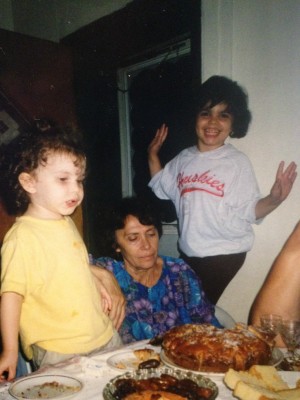My Eastern European-Jewish Experience
April 15, 2015
When Russian Jewish immigrants came to the United States following the fall of the Soviet Union, many were able to receive asylum rather quickly and easily (at least compared to how the U.S. asylum process generally works). Eastern European Jews coming to New York had an additional advantage—Jewish community organizations, like the New York Association for New Americans (NYANA), helped to ease the transitions of these immigrants, provided resources such as English classes, assisted in applying for welfare and generally helped both parents and children establish themselves in the U.S. There was one element of divergence, however: these community organizations quickly found that Jewish immigrants from the Soviet Union weren’t interested in Judaism as religion. NYANA provided the children of immigrants access to pricey Yeshiva schools, or Jewish private schools, and students and parents alike were quick to note that while it was true they did not have access to religion while living in the Soviet Union, they weren’t interested in either learning about or practicing it now.
When my mother (seven months pregnant with me) and sister arrived at JFK airport in February of 1994, a NYANA representative met them at the airport and helped them get to the apartment that my grandparents, aunts, uncles and cousins were sharing in Brooklyn. Since then, they provided invaluable support to my family: providing my father with English lessons when he arrived two months later (and then my mother, after I was born), helping my parents apply for welfare, and advising and assisting us with the asylum process. But Judaism (as a religion) was never really a part of it. For my family, and for many Eastern European Jews, Judaism has always been cultural. “We’re Jewish!”, we proudly exclaim, but we don’t belong to a synagogue, have never attended a religious service and for my bat mitzvah, we simply threw a party and asked the restaurant’s live entertainment to play “Hava Nagila.” It probably goes without saying that we never kept kosher—I did do so for a couple of years, feeling the desire to practice at least some small part of the Jewish religion, however, my strict dietary guidelines came to an end when I accidentally ate bacon and realized I couldn’t not eat it again.
It’s why I talk about Judaism as religion separately from Judaism as culture: it’s how it’s always been presented to me. But despite all this, when we come together on Pesach (Passover), we mourn and feel the pain of our ancestors who were enslaved and celebrate their emancipation just as passionately as those who have spent their lives studying the Torah.
The secularism of Russian Jews is not surprising: after two or three generations living under atheist Soviet rule, it makes sense that we’d move away from and lose interest in seeing Judaism as a religion, instead viewing it as solely a culture. But that has slowly been changing. Taglit-Israel Birthright: Shorasim, or simply Birthright, allows Jewish youth to travel to Israel for free, to discover Israel and what it means to them and the Jewish people, and learn about the values of Judaism. The ease of entering and wide availability of the program has sparked a desire in us to reconnect with the Jewish faith. Our parents too, by association (and by nature “lovingly intrusive”) have felt this desire. My own parents recently took a trip to Israel and were amazed by the deep bond they felt between themselves, the country, its people and Judaism as both culture and religion. They’ve since then forged connections with rabbis and other religious leaders and begun to embrace that part of Judaism that had been lost to them growing up.
The Jewish Community Center (JCC) Manhattan has also recognized this: their Generation Я (“Я” directly translates to the pronoun “I”) programming is focused on the Russian Jewish identity and experience, and what makes it different from that of other Jewish immigrants. Combining dinner and drinks with religious Jewish tradition (a la “Shashlik in the Sukkah,” a celebration of the Jewish holiday of Sukkot with traditional Russian foods like shashliki), inviting Russian-Jewish leaders to speak and providing young children with a twist on the Hebrew school experience (teaching not only about Judaism, but Russian and the Russian/Russian-Jewish identity) exhibit the blending of the unique Eastern European Jewish culture and the more traditional elements of Judaism.
The emergence and popularity of these kinds of programs show that there is a yearning for this to happen—to close the gap between culture and religion, for those spheres of Judaism to blend and come together.
Maybe it took some time for this interest to evolve, but it’s there, and it’s here to stay.










